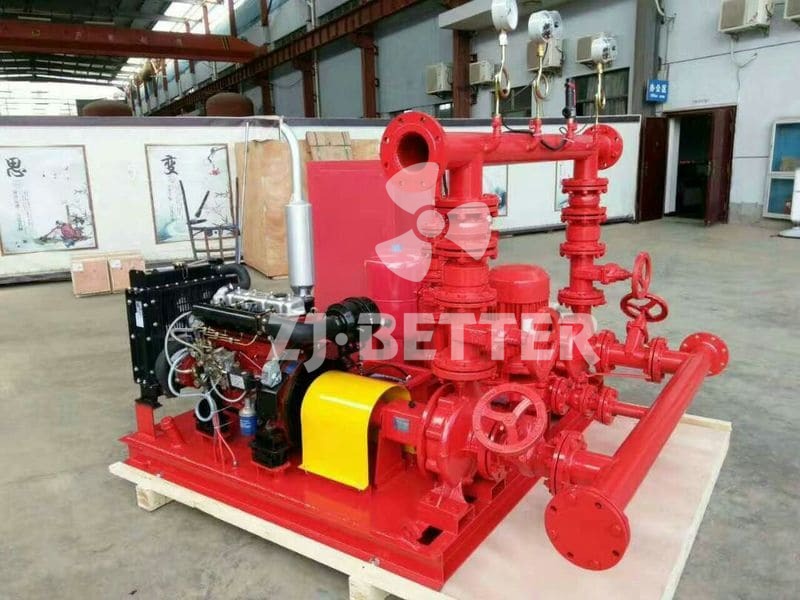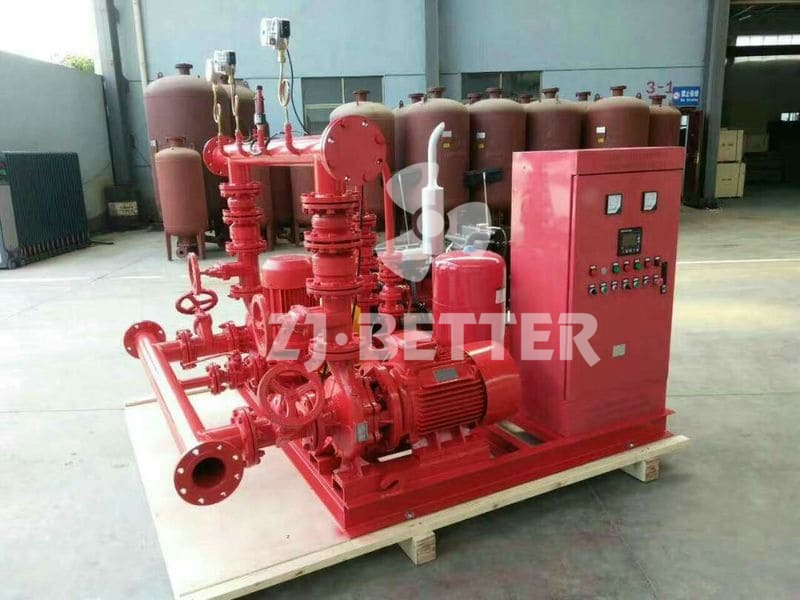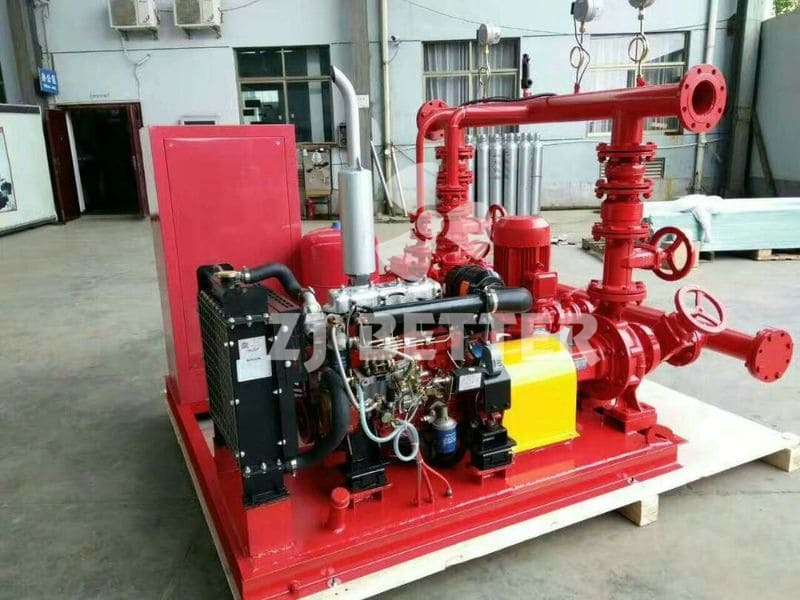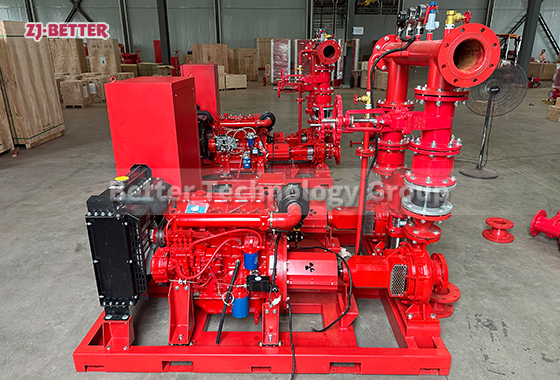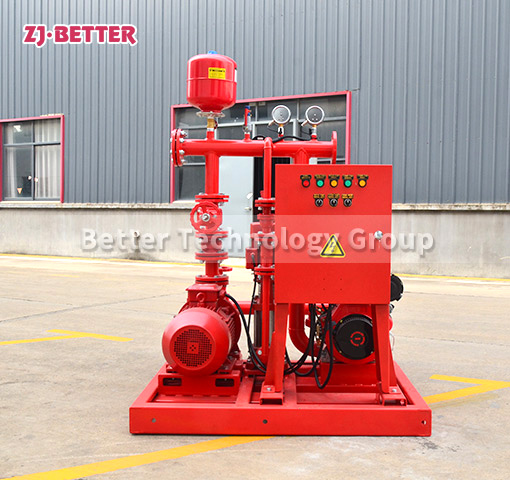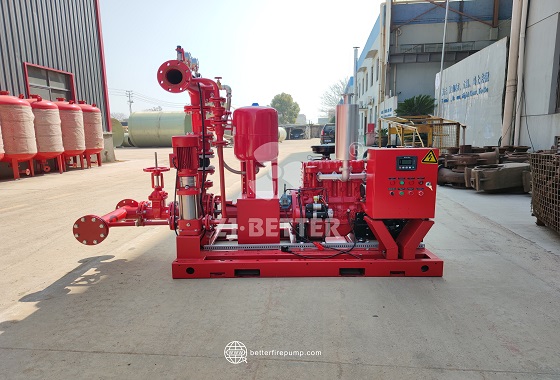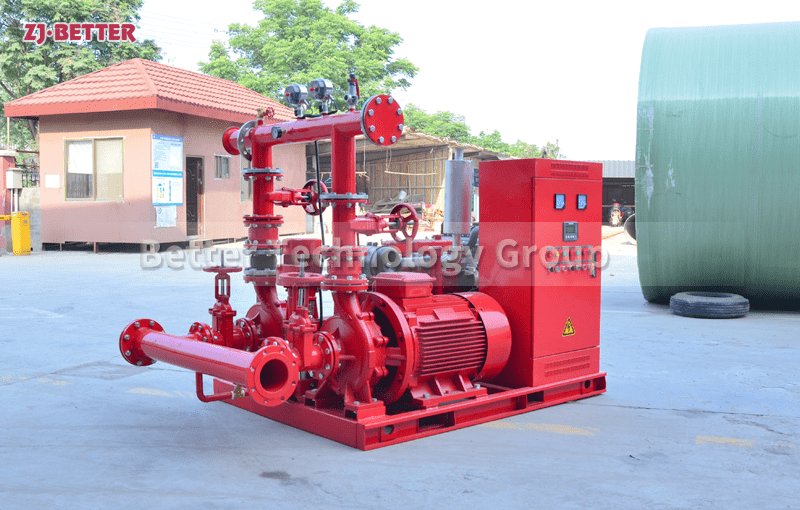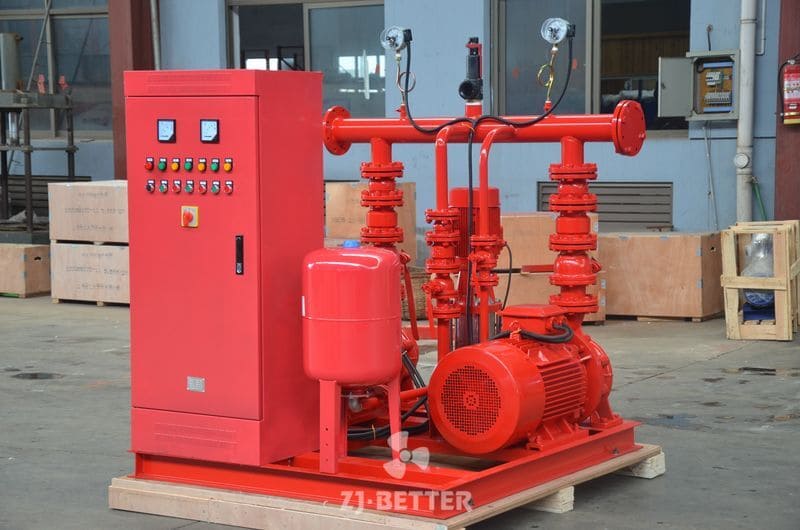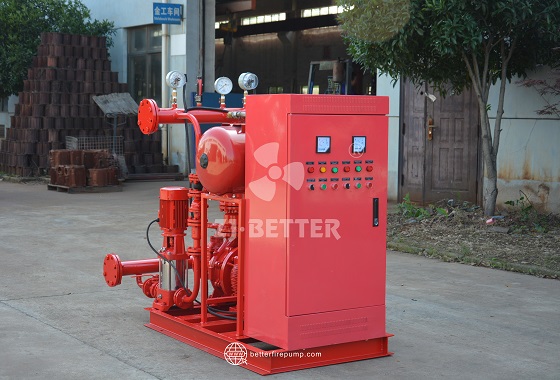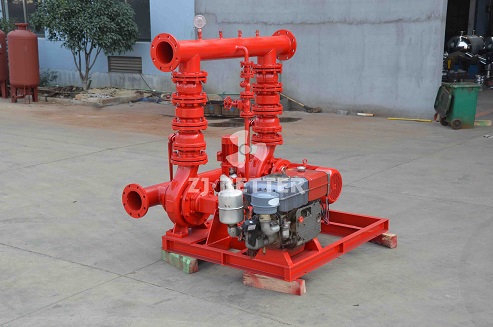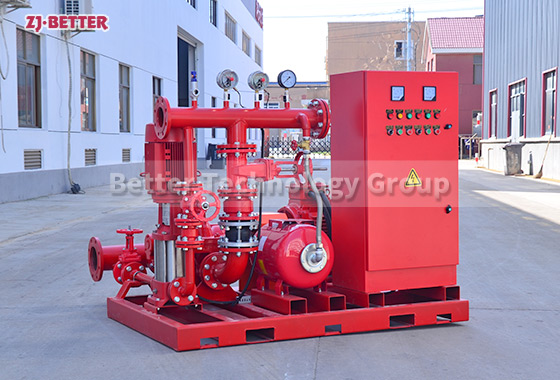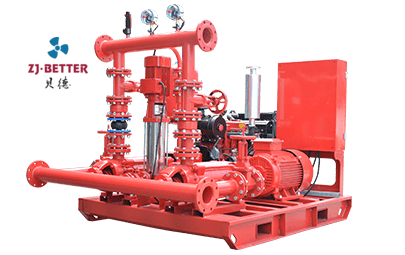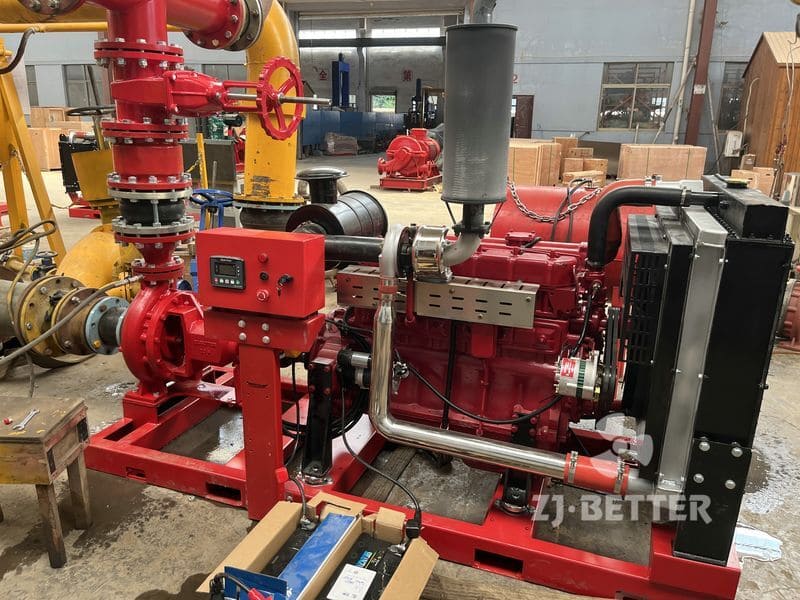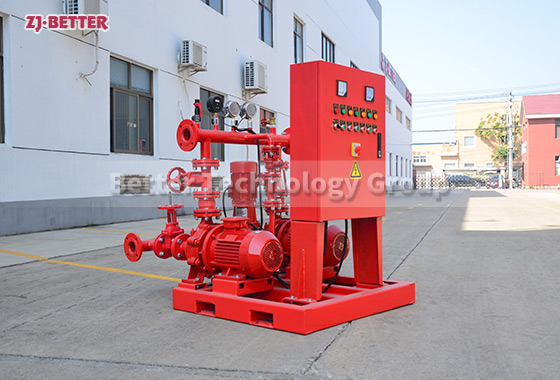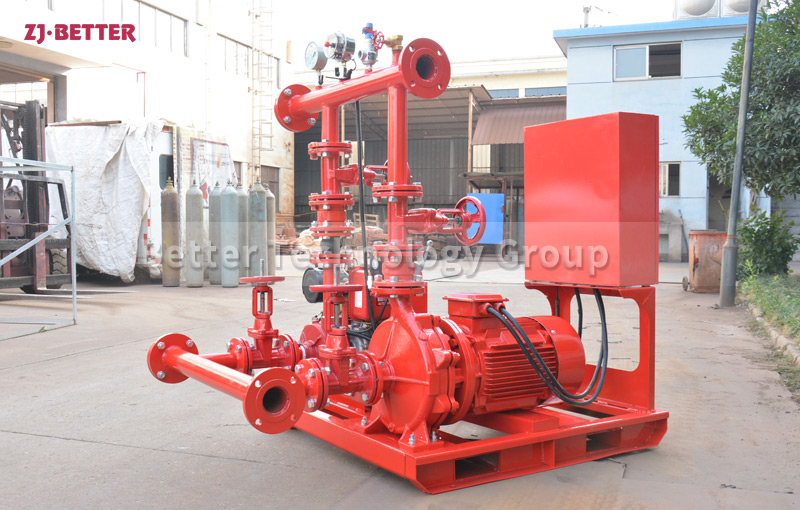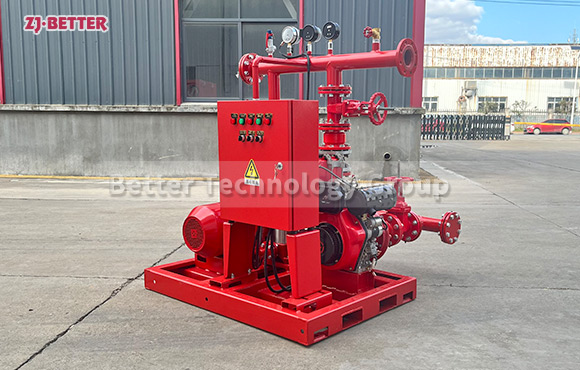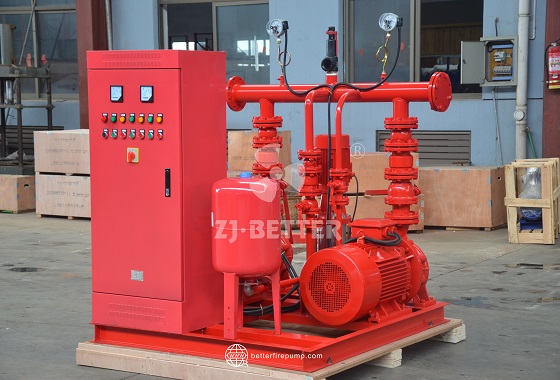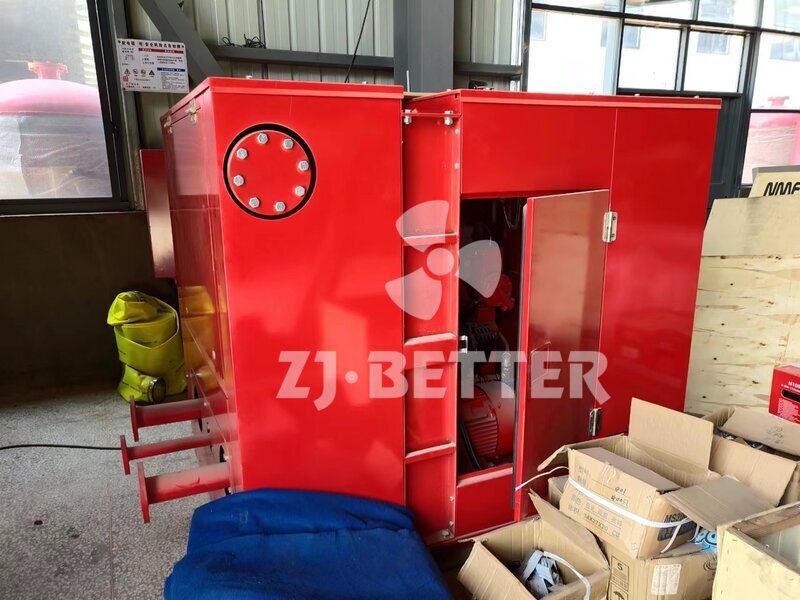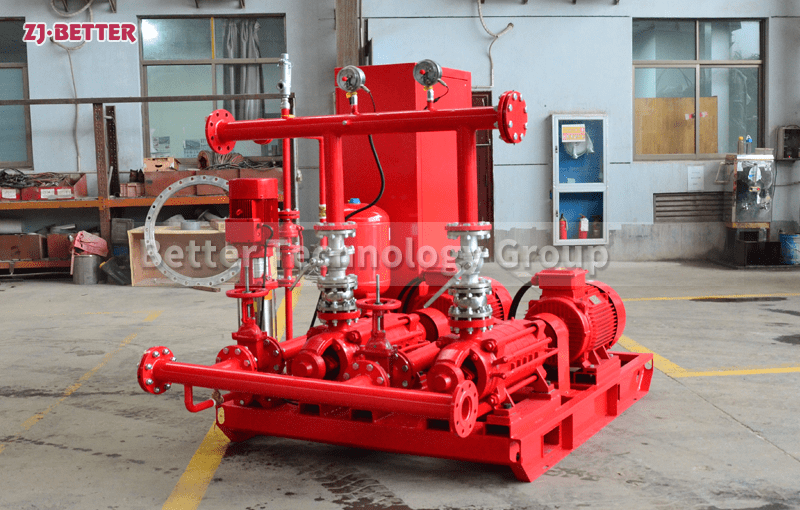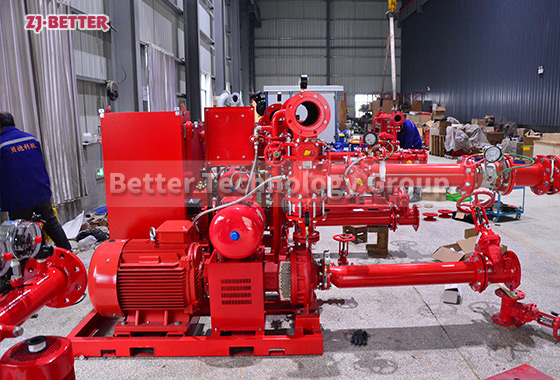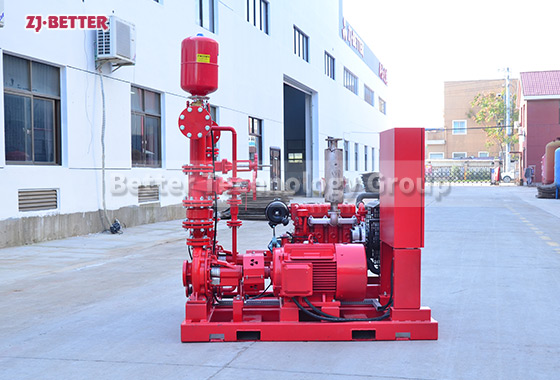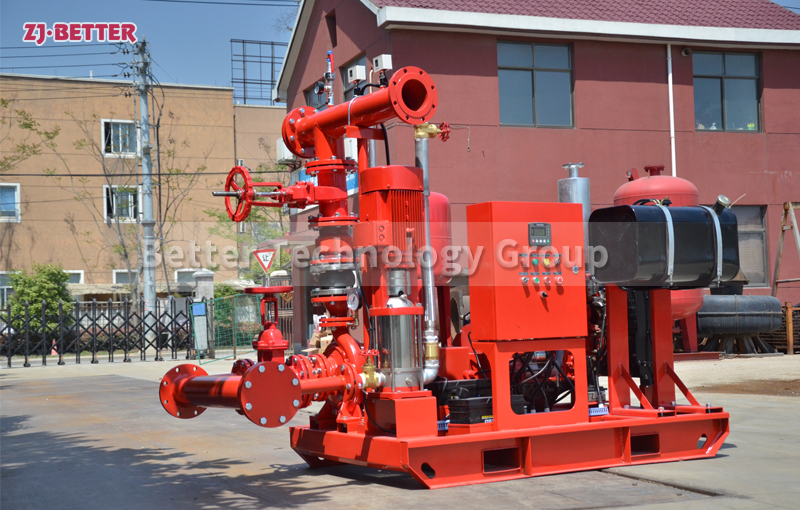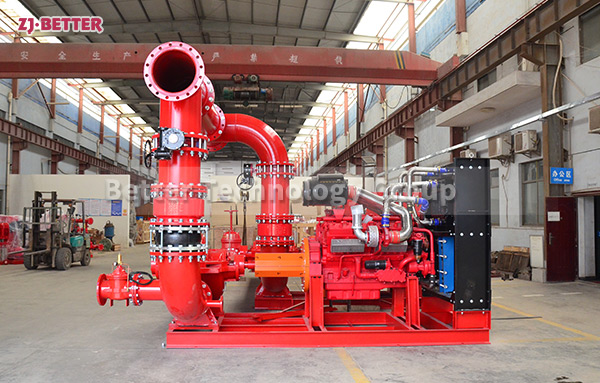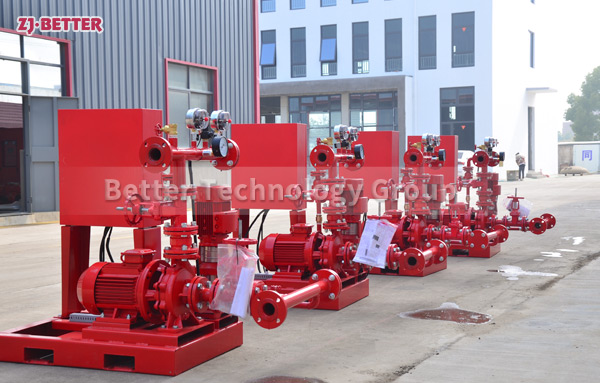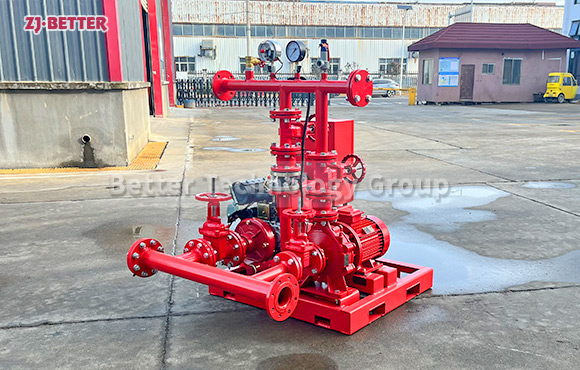Working Principle of Fire Pump
Prior to installation, fire sprinkler systems are hydraulically calculated to ensure adequate water flow and that the system can reliably suppress a fire until fire crews arrive. When it is determined that there is insufficient flow from a municipal supply for the system to function properly, a fire pump is installed. The fire pump activates when the sprinkler system pressure falls below a certain threshold as a result of sprinkler head operation. To maintain the required operating pressure of the sprinkler system, the fire pump draws additional water from the municipal water supply or on-site storage tanks. Due to the size of piping systems and pressure loss, fire pumps are frequently required in high rise construction and large area buildings.
Prior to installation, fire sprinkler systems are hydraulically calculated to ensure adequate water flow and that the system can reliably suppress a fire until fire crews arrive. When it is determined that there is insufficient flow from a municipal supply for the system to function properly, a fire pump is installed. The fire pump activates when the sprinkler system pressure falls below a certain threshold as a result of sprinkler head operation. To maintain the required operating pressure of the sprinkler system, the fire pump draws additional water from the municipal water supply or on-site storage tanks. Due to the size of piping systems and pressure loss, fire pumps are frequently required in high rise construction and large area buildings.

